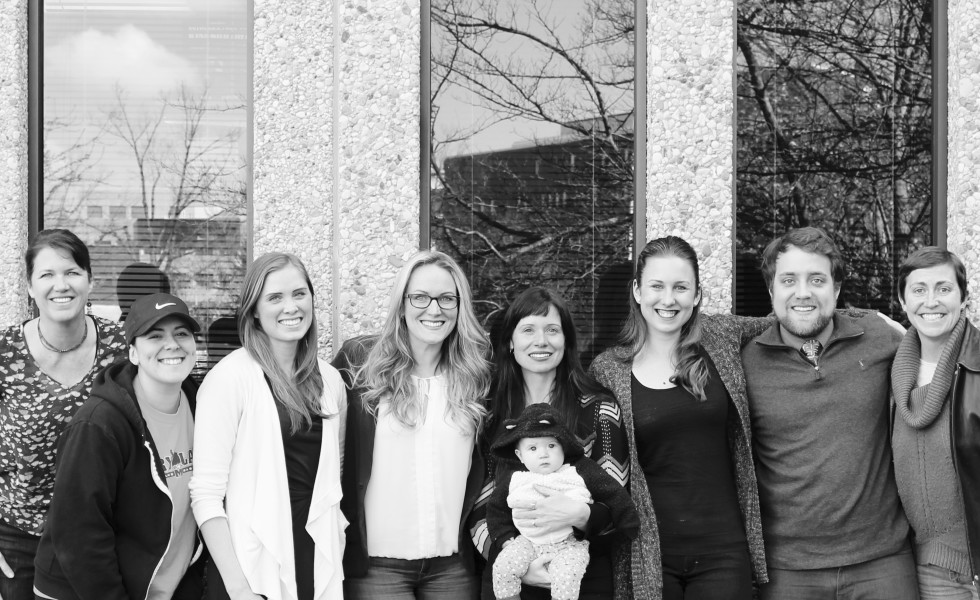
Research
My body of research is broadly focused on sexual well-being in the context of romantic relationships. Specifically, research topics I have explored so far have included sexual quality, solutions to sexual problems, women’s sexual health, sexual and relationship satisfaction, sexual desire, desire discrepancy, sexual trauma, communication, maintaining satisfying sex in long-term relationships, and the effectiveness of integrating sexual pleasure into comprehensive sex education. You can learn more about my research and how it relates to my teaching and service work through perusing my CV.
Featured Current Studies
The Trauma + Sexual Pleasure Study
We are currently analyzing data from an in-depth study of 41 women with a history of sexual trauma (broadly defined) who have worked through their trauma into a healthy sexual relationship. These interview data were incredibly helpful in answering research questions related to negotiating sexual consent, strategies for navigating conversations around sexual assault, strategies that have worked and not worked in moving toward sexual pleasure in relationships after sexual trauma, and redefining sexual pleasure. Several papers are currently in progress for dissemination, with the first recently accepted to Psychology & Sexuality titled “Sexual consent and sexual agency of women in healthy relationships following a history of sexual trauma”. We have also presenting findings from this study at conferences of the Society for the Scientific Study of Sexuality, the Society for Sex Therapy and Research, and the Society for Personality and Social Psychology.
The Mixed Sex Couples Study
With funding from the American Institute of Bisexuality, we are analyzing data collected from mixed sex couples where one or both members of the couple identify as bisexual. There is so little research on bisexual identity, and even less in the context of the couple. This online study involved a baseline questionnaire, a 30-day daily electronic report, and a follow-up interview. We have presented the findings of this research at a number of national and international conferences. Our team is actively writing up the findings from this study for dissemination through peer-reviewed journal articles.
The You + Your Desire Study
We have been been developing an event-level measure for sexual desire. Sexual desire is not always experienced as a beginning of the relationship butterflies response. Sometimes, arousal may come first, or desire may spark from a non-sexual need being met. Researchers and clinicians have long thought about the ways in which sexual desire is responsive in nature, but we do not currently have measurement tools that assess this. We have completed the first four phases of this five phase study. Scale development is a long process, but our findings are only as strong as our measurement, so we want to make sure we are focusing in on making this a methodologically and psychometrically sound measurement tool.
Featured Prior Studies
The Couples Study
We are also currently working with The Couples Study data, a longitudinal and daily experience study of over 200 mixed-sex couples, to answer a number of questions regarding sexual desire, desire discrepancy, and satisfaction. There have been a couple of papers already published from this study. One on the object of one’s sexual desire published in the Journal of Sexual Medicine (found here) and another a psychometric comparison of sexual satisfaction scales, published in the Journal of Sex Research (found here). We have also published a few other articles from this dataset, outlined in the featured articles section.
The Diverse Women’s Desire Study
Data from 31 in-depth semi-structured interviews with bisexual, lesbian, and straight women and their experience of sexual desire in the context of relationships have been transcribed and analyzed. We have presented these findings at several conferences and published one paper from this study so far about the sociocultural context of women’s sexual desire (found here).
The Sexual Health & Relationships Study
We recently finished collecting data for a large study on sexual health and relationships where an oversampling of sexual minority populations was a priority. These data have been analyzed and presented at several conferences and published in a couple of journal articles. A paper on attachment style and sexual desire and satisfaction can be found here and a paper that was a psychometric validation of the Sexual Desire Inventory can be found here.
The Condom & Couples Study
We recently finished collecting data from young couples after asking them to get creative in finding ways to make condoms more pleasurable. We wanted to further understand how couples integrate pleasure into condom use. A top reason people engage in sex is for pleasure. If our condoms don’t integrate a pleasure-based approach, it is hard to expect people to use them. Participants were asked to engage in a couple-based entrance interview, asked to provide daily electronic reports for 7 days following the interview, and engage in an individual exit interview.
 Kristen Mark
Kristen Mark



